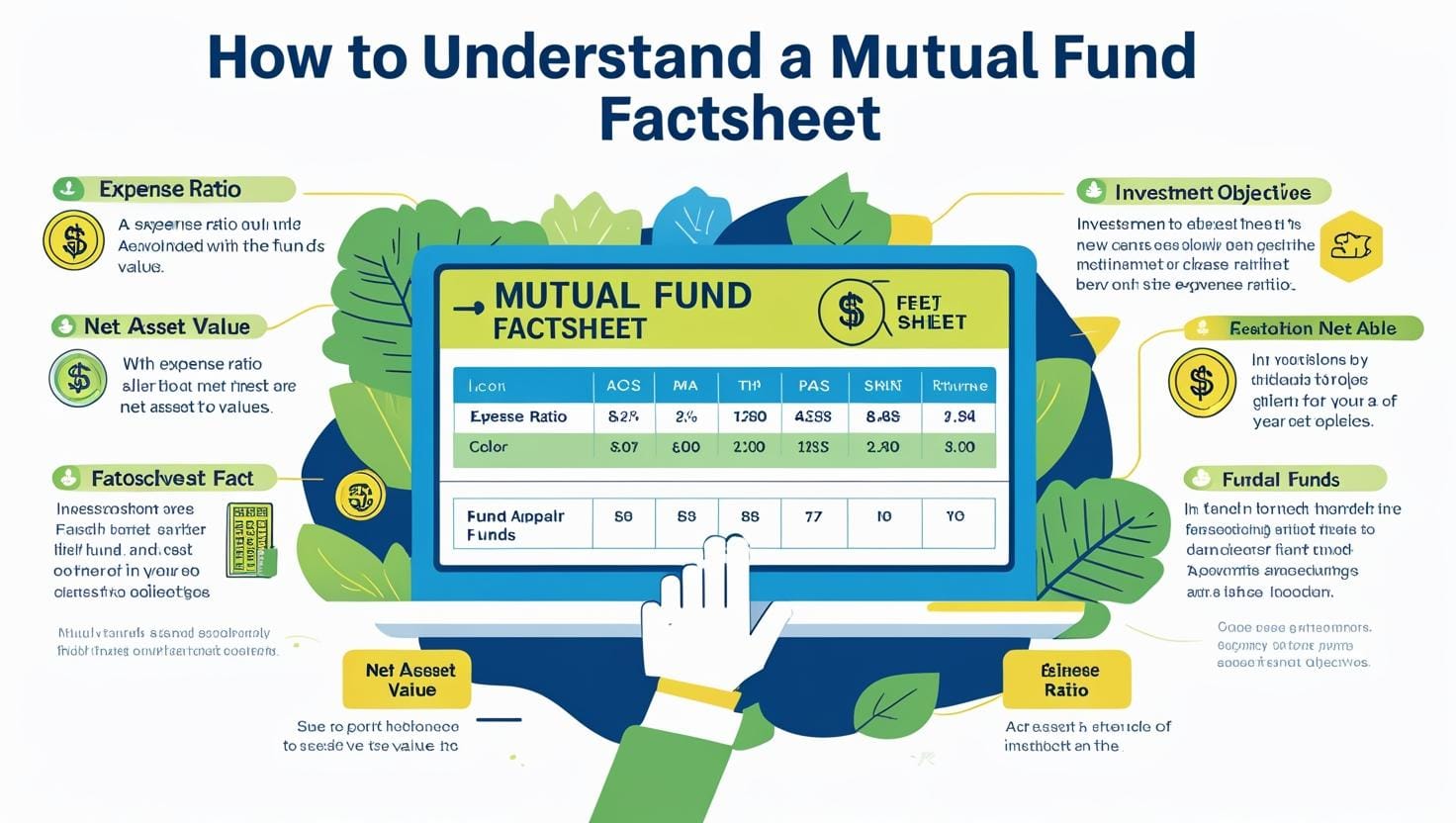How to Read a Mutual Fund Factsheet (Without Getting Confused)
Mutual fund factsheets can feel overwhelming. This guide simplifies every section — so you can choose the right fund with clarity and confidence.

Mutual funds are everywhere now — SIP ads on YouTube, tips on Instagram, and endless recommendations from friends.
But if you’ve ever opened a mutual fund factsheet, you probably thought:
“Wait… what are all these numbers?”
Don’t worry — you’re not alone.
A factsheet is just a performance report of a mutual fund. And once you understand the basics, it becomes your superpower for choosing better funds.
Let’s break it down — in plain language.
🧾 What Is a Mutual Fund Factsheet?
⭐️ A mutual fund factsheet is a monthly/quarterly report that shows:
- Where your money is invested
- How the fund has performed
- Who is managing it
- Risk, returns, charges, and more
⭐️ It's like a report card + X-ray of the fund.
You’ll find factsheets on:
- Fund houses’ websites (e.g. HDFC MF, Axis MF)
- Investment platforms (Groww, Kuvera)
- SEBI/AMFI-regulated apps
🧠 Key Sections You Should Know:
✅ 1. Fund Overview
📌 Name: HDFC Long Term Equity Fund (Direct - Growth)
Here you’ll see:
- Type: ELSS, large-cap, hybrid, etc.
- Objective: What the fund aims to do (e.g., long-term capital growth)
- Category: Equity, debt, hybrid, etc.
- Plan: Direct (no agent) or Regular
- Option: Growth (reinvest profits) or IDCW (get dividends)
🟢 Tip: Prefer Direct + Growth for long-term wealth.
✅ 2. Fund Manager & Experience
Shows who runs the fund and for how long.
Why it matters:
The fund manager’s experience and track record can impact consistency and decision-making.
🟢 Look for: Someone with at least 3–5 years managing that specific fund.
✅ 3. Performance (Returns)
Compares fund performance to a benchmark (like Nifty 50)
| Time Frame | Fund Return | Benchmark Return |
|---|---|---|
| 1 Year | 14.2% | 13.0% |
| 3 Years | 17.5% | 15.4% |
| 5 Years | 12.8% | 11.2% |
🟢 Check: Is the fund consistently beating the benchmark? Over 3+ years, not just 1.
✅ 4. Portfolio Allocation
This shows where your money goes:
🟢 Equity Funds:
- % in Large Cap (e.g. Reliance, HDFC Bank)
- % in Mid Cap, Small Cap
- Sector exposure: IT, Banking, Pharma, etc.
🟡 Hybrid Funds:
- % in equity
- % in debt instruments
- % in cash/liquid assets
🟢 Look for: Balanced exposure based on your risk profile.
✅ 5. Top Holdings
Example:
- Infosys – 8.2%
- HDFC Bank – 7.5%
- ICICI Bank – 6.3%
...
Shows the top companies in the portfolio.
🟢 Tip: Make sure the fund isn’t over-concentrated (e.g., 50% in just 5 stocks)
✅ 6. Expense Ratio
This is the annual fee charged by the fund house.
| Plan | Expense Ratio |
|---|---|
| Regular | 1.75% |
| Direct | 0.75% ✅ |
🟢 Lower = better.
⭐️ Prefer Direct plans, where your returns aren’t eaten up by commissions. ⭐️
✅ 7. Riskometer
A SEBI-mandated visual that shows the fund’s risk level:
- Low
- Moderate
- High
- Very High 🔥
🟢 Match your choice to your risk appetite. Don’t pick “Very High” just because returns look high.
✅ 8. Exit Load & Lock-in
- Exit Load: Penalty if you withdraw too soon (e.g., 1% if withdrawn before 1 year)
- Lock-in: Only applies to ELSS (3 years mandatory)
🟢 Important if you may need money early.
💬 Final Thoughts
You don’t need to be a finance geek to read a factsheet.
Just focus on:
✔️ Returns vs Benchmark
✔️ Expense Ratio
✔️ Holdings & Risk
✔️ Lock-in or Exit Load
✔️ Fund Manager’s consistency
⭐️ The more you read them, the better you’ll get at choosing smarter funds — not hyped ones.
📢 Coming Soon:
Free “Mutual Fund Factsheet Decoder” — A visual guide with screenshots
👉 Subscribe to Bitveen to get it first!
Disclaimer: The mutual fund(s) mentioned in this post are for educational purposes only and do not constitute investment advice or recommendations. Please consult a SEBI-registered advisor before making any investment decisions.
This post is for educational purposes only and should not be considered financial advice.
